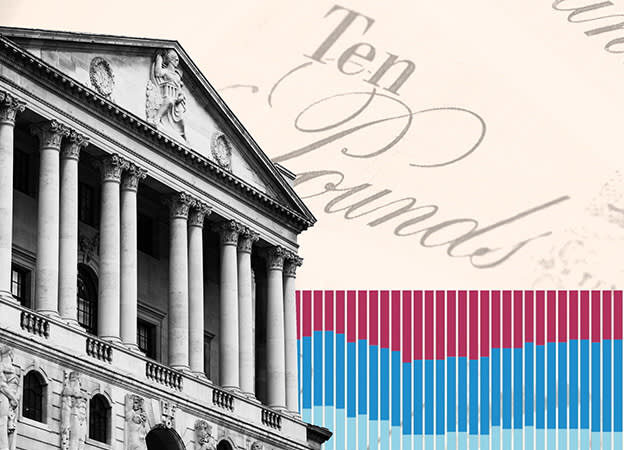
- Losses now expected to reverse the £124bn in net transfers provided to the Treasury
- Will the BoE be forced to step down the pace of QT after next year?
A year on from the start of the quantitative tightening (QT) programme, and the Bank of England’s (BoE) total gilt holdings have fallen from a peak of £875bn to £780bn today. The BoE is satisfied that things are progressing well – so well, in fact, that it intends to up the pace next year.
In last week’s monetary policy meeting, rate-setters announced that they would increase the pace of quantitative tightening from £80bn to £100bn a year. With around £50bn of gilts set to mature over the next 12 months, this suggests active sales of around this amount, up from £45bn over the past year.
The BoE has moved quickly to sell the bonds it bought during quantitative easing (QE), and it’s streets ahead by international standards. Christopher Mahon, portfolio manager at Columbia Threadneedle, calculates that (adjusting for the size of different bond markets) the net effect of UK gilt sales is so far equivalent to sales of over 7 per cent of government debt. As the chart shows, this is around 70 per cent faster than the pace of the Federal Reserve and over twice the pace of the European Central Bank (ECB).
In one sense, this decisive action is commendable. Analysts at Société Générale say that criticism of the Bank’s use of QE during the pandemic “jeopardised its independence” and made it “keen to start QT at the earliest possible opportunity”. As a result, the aggressive pace could have helped to bolster the Bank’s credibility.
But it is not without its downsides. Analysts are increasingly concerned about the impact of selling larger quantities of gilts at a time of rising interest rates. Higher policy rates have seen gilt prices drop off significantly, especially at the long end of the curve. As a result, the BoE is currently selling at a loss, with its Asset Purchase Facility (APF) fully indemnified by the Treasury.
Deutsche Bank analysts calculate that since last October, the Treasury has transferred almost £30bn to cover these losses. £12bn of this is the result of active gilt sales, with two-thirds of the losses coming from sales at the longer end of the gilt curve. Columbia Threadneedle’s Mahon said that the rapid pace of QT means that “the BoE is choosing to rush to crystalise this loss now, rather than going slow or waiting for interest rates to go back down”.
Mahon thinks that UK government bonds need to offer a ‘premium’ in order to attract buyers as a result of the extra supply from QT. He has calculated that this could be adding 0.4 percentage points a year to the borrowing costs of the UK government. Deutsche Bank analyst Sanjay Raja has also raised concerns about the impact of losses from QT on the public finances. He calculates that they would ultimately reverse the £124bn in net transfers provided to the Treasury when interest rates were lower.
According to Raja, although the APF was never intended to be a permanent feature of the BoE’s balance sheet, flows “have put meaningful pressure on the public finances and will continue to do so in the coming years”. He added that the dynamic could become increasingly difficult given that no other major central banks have had to register such losses with “as direct and immediate of consequences to the public finances”.
As a result, analysts are not convinced that a faster pace of bond sales is entirely sustainable. Mahon compared today’s gilt sales with “when the UK infamously sold its gold holdings at the bottom of the market”, while Raja questioned whether the BoE’s QT strategy would soon need rethinking. He points out that the BoE is mandated to support the “wider economic objectives of the government”, while early plans to unwind QT set out that “[as] normal conditions return…[the] Bank will consider the appropriate mechanisms for selling assets, having due regard for the impact of those sales on the prices achieved”.
All in all, Raja thinks that the BoE may be forced to temper active sales after the forthcoming programme comes to an end. He expects its APF to settle around £400bn-£500bn by 2025, and stay around this level for some time. In other words, despite the recent acceleration, QE won’t be completely unwound.






